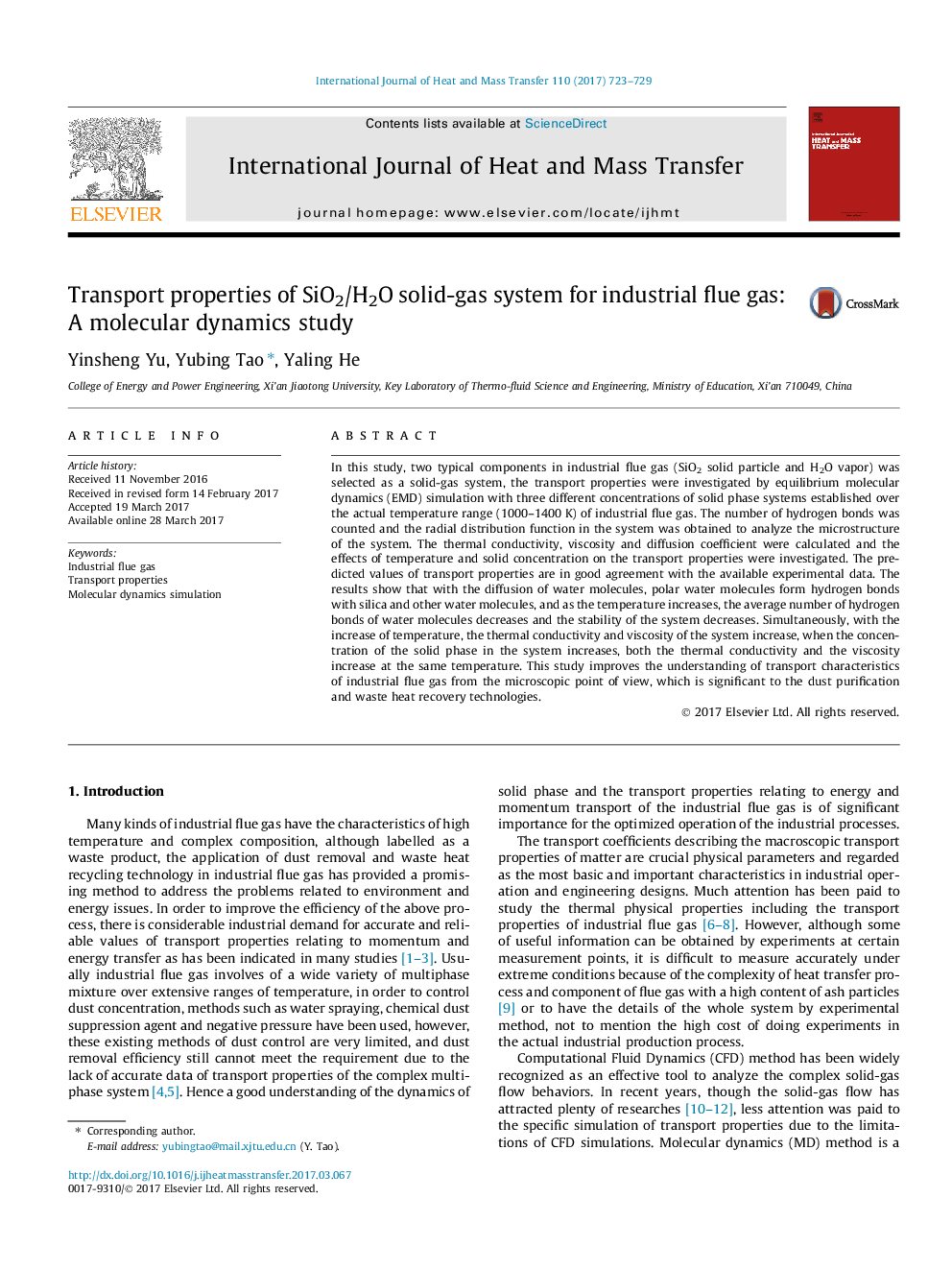| Article ID | Journal | Published Year | Pages | File Type |
|---|---|---|---|---|
| 4993600 | International Journal of Heat and Mass Transfer | 2017 | 7 Pages |
Abstract
In this study, two typical components in industrial flue gas (SiO2 solid particle and H2O vapor) was selected as a solid-gas system, the transport properties were investigated by equilibrium molecular dynamics (EMD) simulation with three different concentrations of solid phase systems established over the actual temperature range (1000-1400Â K) of industrial flue gas. The number of hydrogen bonds was counted and the radial distribution function in the system was obtained to analyze the microstructure of the system. The thermal conductivity, viscosity and diffusion coefficient were calculated and the effects of temperature and solid concentration on the transport properties were investigated. The predicted values of transport properties are in good agreement with the available experimental data. The results show that with the diffusion of water molecules, polar water molecules form hydrogen bonds with silica and other water molecules, and as the temperature increases, the average number of hydrogen bonds of water molecules decreases and the stability of the system decreases. Simultaneously, with the increase of temperature, the thermal conductivity and viscosity of the system increase, when the concentration of the solid phase in the system increases, both the thermal conductivity and the viscosity increase at the same temperature. This study improves the understanding of transport characteristics of industrial flue gas from the microscopic point of view, which is significant to the dust purification and waste heat recovery technologies.
Related Topics
Physical Sciences and Engineering
Chemical Engineering
Fluid Flow and Transfer Processes
Authors
Yinsheng Yu, Yubing Tao, Yaling He,
